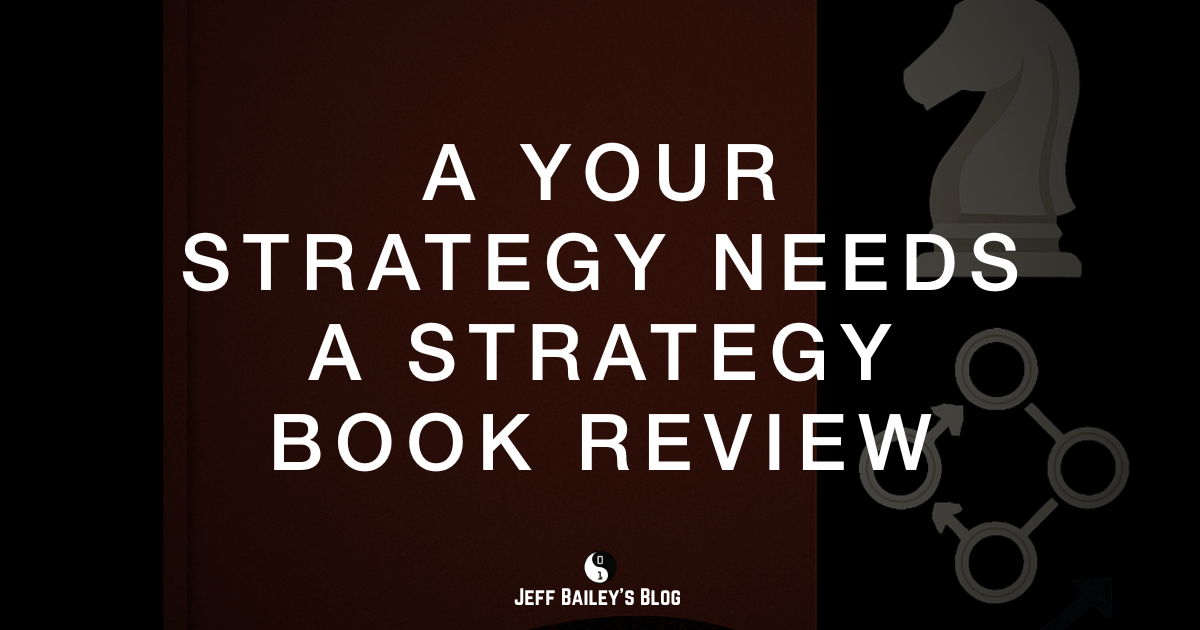Have you ever felt that your organization’s strategy is failing miserably? I’ve been there countless times. That’s why I dove into “Your Strategy Needs a Strategy” - a book that fundamentally changed how I think about organizational strategy.
Who Can Benefit from This
Is this book for you?
Here’s who will benefit most:
- Business leaders looking to refine their strategic approach.
- Entrepreneurs building their first strategy.
- Anyone interested in understanding why organizations succeed or fail.
Why This Book Matters
In today’s rapidly changing world, having the right strategy is critical. This book provides a robust framework for understanding your environment and choosing the appropriate strategy or changing your behavior to align with your prevailing organizational strategy.
Let me explain why this book deserves a spot on your reading list.
Key Takeaways
Here’s what I learned from this book:
- Environment-Specific Strategy: Different environments require different strategies. This simple yet powerful concept transformed how I approach strategic planning.
- Practical Framework: The authors provide a clear, actionable framework for identifying your environment and selecting the right strategy.
- Real-World Application: The concepts immediately apply to any organization, from startups to established enterprises.
Strategic Models Explained
The book introduces five distinct strategic approaches for different business environments.
Let me break them down:
Classical Strategy: The Planning Approach
Microsoft’s Windows operating system dominance in the 1990s and early 2000s exemplifies classical strategy. In a relatively stable market with high barriers to entry, Microsoft could:
- Plan product releases years in advance.
- Invest heavily in long-term R&D
- Execute systematic market expansion.
- Build deep relationships with hardware manufacturers.
This worked because the PC market was predictable, with clear competitive advantages and customer needs.
Adaptive Strategy: The Agile Approach
Netflix’s evolution from DVD rentals to streaming to content creation shows adaptive strategy at its finest. In a rapidly changing media landscape, Netflix:
- Continuously experiments with new features and content
- Rapidly adjusts pricing and subscription models.
- Uses data to inform quick pivots
- Maintains flexibility in partnerships and technology
This approach helps Netflix thrive in an unpredictable market where consumer preferences and technology constantly evolve.
Visionary Strategy: The Innovation Approach
Amazon’s approach to cloud computing demonstrates visionary strategy. When AWS launched in 2006, there wasn’t a market for on-demand cloud infrastructure. Amazon:
- Created an entirely new market category
- Built infrastructure (global data centers) ahead of demand
- Invested in future technologies (serverless computing, AI services)
- Shaped enterprise perceptions about IT infrastructure
This strategy works when you’re creating something revolutionary rather than evolutionary.
Shaping Strategy: The Ecosystem Approach
Apple’s App Store launch in 2008 perfectly illustrates the shaping strategy. Apple didn’t just create a marketplace; they shaped an entire ecosystem:
- Established development standards and tools
- Created new revenue models for developers
- Built a platform that attracted both users and creators
- Influenced how mobile software is distributed and monetized
This strategy works when influencing multiple stakeholders to create a new market structure.
Renewal Strategy: The Turnaround Approach
IBM’s transformation under Lou Gerstner in the 1990s demonstrates a renewal strategy in action. Facing obsolescence, IBM:
- Shifted focus from hardware to services and consulting
- Restructured the organization
- Rebuilt the company culture
- Reallocated resources to growing markets
This strategy is crucial when core business models become threatened or obsolete.
Strategy Conflicts: When Environments Collide
One of the most challenging aspects of strategy implementation occurs when different parts of an organization operate in contrasting environments. Here’s what happens when strategies collide:
Classical vs. Adaptive Tension: Conflicts often arise when a stable, predictable division (using classical strategy) interacts with a rapidly changing division (using adaptive strategy). The classical division’s need for detailed planning and predictability can clash with the adaptive division’s quick pivots and experimentation requirement.
Visionary vs. Renewal Conflicts: A visionary strategy focused on creating new markets can create resource conflicts with a renewal strategy trying to stabilize struggling operations. Both need significant investment, but for very different purposes.
Shaping vs. Classical Dilemmas: When one part of the organization tries to shape an entire ecosystem while another executes a classical strategy, the tension between standardization and flexibility becomes apparent.
What I Loved
Here’s what stood out to me:
- The environment-specific guidance makes strategy selection straightforward
- The framework helps document and drive organizational objectives effectively
- The practical examples make complex concepts accessible
- Real-world case studies from major companies illustrate each strategy type
Areas for Improvement
While the content is excellent, there are a few things to note:
- The book can feel dense if you’re not already interested in strategy
- Some sections could benefit from more engaging storytelling
- The theoretical framework might need additional real-world examples for some readers
- Limited coverage of digital transformation and remote work challenges
Final Thoughts
“Your Strategy Needs a Strategy” is a strategic toolkit. The framework it provides has fundamentally changed how I think about organizational strategy. Whether you’re leading a team, running a business, or just interested in strategy, this book offers valuable insights you can apply immediately.

Comments #